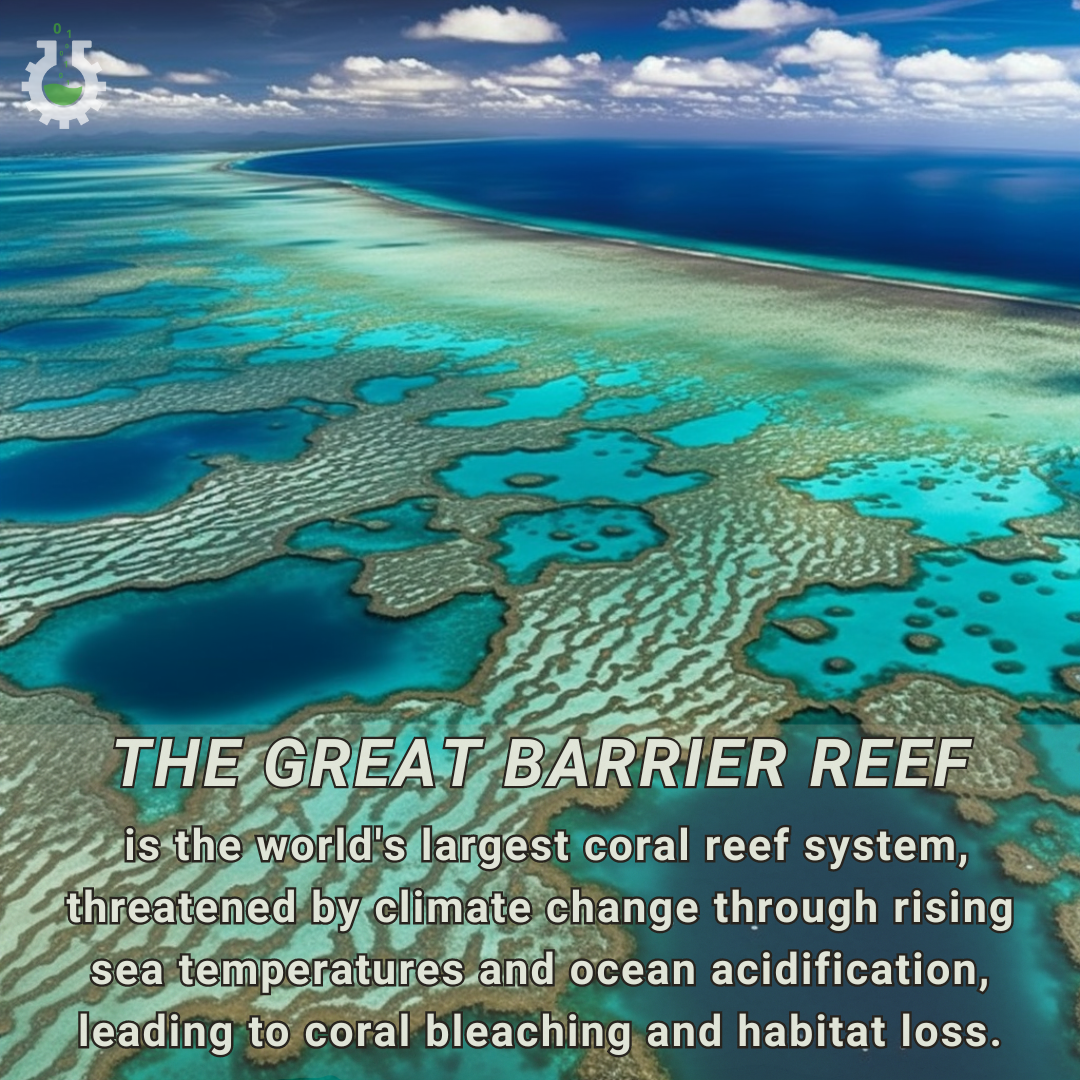July 23, 2024
Climate Change Poster Collection of the Day – The Great Barrier Reef
Book a Demo
Today’s Climate Change Poster Collection highlights The Great Barrier Reef, a sprawling ecosystem off the northeastern coast of Australia, is the largest coral reef system in the world, stretching over 2,300 kilometers and comprising nearly 3,000 individual reefs and 900 islands. This natural wonder, often described as one of the most complex and diverse ecosystems on the planet, is home to an astonishing array of marine life, including over 1,500 species of fish, 411 types of hard coral, and countless other invertebrates, birds, and marine mammals. The reef’s vibrant underwater landscapes, teeming with life and color, have made it a UNESCO World Heritage site and a global icon of natural beauty. However, this underwater paradise is facing an existential threat from climate change, which is manifesting in several devastating ways.
The most immediate and visible impact of climate change on the Great Barrier Reef is coral bleaching, a phenomenon where corals expel the symbiotic algae living in their tissues due to stress from elevated sea temperatures. These algae, known as zooxanthellae, provide the corals with both their color and a significant portion of their energy through photosynthesis. Without them, the corals turn white and, if the stressful conditions persist, can ultimately die. The Great Barrier Reef has experienced several mass bleaching events in recent years, with the most severe occurring in 2016 and 2017, leading to the loss of nearly half of its coral cover. The frequency and intensity of these bleaching events are increasing, driven by rising global temperatures and more frequent marine heatwaves.
In addition to coral bleaching, ocean acidification poses a significant threat to the reef. As carbon dioxide levels in the atmosphere rise, more CO2 is absorbed by the oceans, leading to a decrease in pH levels. This process, known as ocean acidification, weakens the corals’ calcium carbonate skeletons, making them more susceptible to erosion and breakage. The changing ocean chemistry also affects other marine organisms, such as shellfish and plankton, which are crucial components of the reef’s food web. The combined effects of bleaching and acidification are creating a hostile environment for coral growth and regeneration, undermining the resilience of the reef.
The rising sea temperatures and changing ocean chemistry are also disrupting the reproductive cycles of many marine species. For instance, some fish species are experiencing shifts in spawning times, which can lead to mismatches in the availability of food for their larvae. These disruptions can have cascading effects on the entire ecosystem, altering food webs and leading to declines in fish populations that are crucial for the reef’s health and for the livelihoods of local communities. The Great Barrier Reef supports a multi-billion-dollar tourism industry, attracting millions of visitors each year who come to experience its natural beauty. The degradation of the reef could have severe economic consequences, affecting tourism, fishing, and the broader regional economy.
Furthermore, the increased frequency and intensity of extreme weather events, such as cyclones, are causing physical damage to the reef structure, compounding the stress on this delicate ecosystem. Cyclones can break apart coral formations, uproot seagrass beds, and cause sedimentation that smothers corals. The recovery from such events can take decades, and with the increasing frequency of cyclones, the reef may not have sufficient time to heal between disturbances.
Efforts to mitigate these impacts through conservation initiatives, sustainable practices, and global climate action are more critical than ever to preserve this irreplaceable natural heritage for future generations. Local conservation efforts include reef restoration projects, such as coral gardening and the development of heat-resistant coral strains. Additionally, policies aimed at reducing coastal pollution, managing fisheries sustainably, and protecting critical habitats are essential for enhancing the reef’s resilience.
However, local actions alone are not enough. The fate of the Great Barrier Reef is intricately linked to global climate policies. Reducing greenhouse gas emissions, transitioning to renewable energy sources, and implementing international agreements like the Paris Accord are vital steps toward mitigating climate change. The reef’s plight underscores the urgent need for comprehensive and coordinated efforts to address this global crisis. The Great Barrier Reef is not just an Australian treasure; it is a global heritage site that symbolizes the beauty and fragility of our planet’s ecosystems. Its preservation is a shared responsibility that requires collective action and a commitment to sustainable living.
Discover an inspiring collection of climate change poster.



